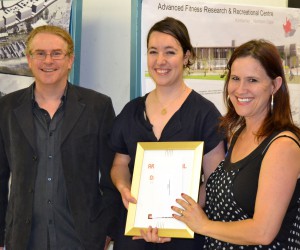Architects of the future combine sustainability with design at the 28th Corobrick Architectural Student of the Year awards.
A fine architect combines design talent with engineering ability, social awareness and an aptitude for business. In recent years this skills set has, of necessity, expanded to include the pursuit of sustainable development. Today’s projects demand a clear understanding of the impact of modern technologies on the environment as well as the importance of wise water consumption, low energy usage and a light carbon footprint. Students of architecture who embrace these concepts and unite them with their artistic talent are those who will shape the built environment of the future.
It is these students who will be acknowledged and rewarded in the 28th Corobrik Architectural Student of the Year Awards, currently in the regional phase at eight universities across the country in the run-up to the national finals in Johannesburg in April next year.
Christine van den Bergh of Corobrik presented prizes to architectural students of the University of Witwatersrand. The regional winner of R8000 was Sarah De Villiers, with Adeline Gruber and Elliott Marsden sharing the second prize of R6 000 each. The winner of the R4000 prize for best use of clay masonry was Jarred Pincus.
The overall winner from among the regional finalists will be named and presented with a cheque for R50 000 at the 28th Corobrik Architectural Student awards function at The Maslow in Johannesburg on 22 April 2015.
“We are well into our third decade of sponsoring these awards,” said van den Berg. “Our intention has always been to inspire design excellence but the complexities of the global environment today demand a far broader vision from our students. We are looking for a deepened sensitivity towards the three pillars of sustainable development – the environment, the economy and our social fabric. This has to be seamlessly combined with practical solutions to a particular architectural challenge and with artistic flair that embodies the spirit of the vibrant South African nation.”
“The students who have received awards today have demonstrated a remarkable maturity in their work and a welcome acceptance of the multifaceted approach we expect from them which bodes well for the future of the profession and the sustainability of our planet.”
Sarah de Villiers’s thesis ‘Idea Bank,’ proposes that people from Alexandra with business ideas can upload their concept onto an Idea ATM. She believes that residents of Alexandra have intellectual capital to offer, and solutions to give against difficult spatial circumstances. The Idea Bank offers a physical and abstract entry into financial capital, by providing a system whereby ideas receive a monetary worth, which offers new currency for growth and upliftment.
De Villiers says, “Ideas that would improve life in Alex would be fore-mostly promoted, for example technological proposal for smarter solar-generated geysers, a new type of floor-polish for informal dwellings, or a door-to-door bread service which overcomes street inaccessibilities. These are all examples of real-life inventions that have recently come out of Alexandra, and would be the type of products and services I would imagine would be presented on the idea trading floor. The projects would be crowd-funded by investors from Sandton or elsewhere in Johannesburg, who wish to diversify their portfolios into upcoming local trends.”
Adeline Gruber’s thesis is entitled ‘Translating the ‘Man-made’ – An Underwater Observatory on The Shoreline of Lake Malawi.” The construction will give livelihood for local fisherman and be a sanctuary for native cichlid fish.
In joint second place Elliott Marsden’s “MAKESHIFT” is an experimental stage for spatial exchange for digital and physical translation allowing students, academics, industry partners and public a facility to integrate.
Jarred Pincus received the award for best use of clay brick in his ‘Fortress of Faith.’
The project incorporated brick as the site is Jerusalem, Israel which has a stringent urban building code that requires the façade of a building to be constituted of 60% Jerusalem Stone. Pincus said, “This requirement led me to delve into various uses and of the material and how it would be able to improve the design and its subsequent forms. Masonry’s inherent scale allowed the large geometric forms prevalent in the design to be scaled down into comfortable proportions for the user. Furthermore the masonry unit allowed for varying finishes that encouraged the ethos of the project."
Fortress of Faith is a multi-faith parliament that focuses on religious and political conflict. It houses the three Abrahamic religions (Judaism, Christianity, Islam) that are prevalent in Israel. The project contains three separate prayer halls, a 'parliament' and education center.
Shirley Williams






